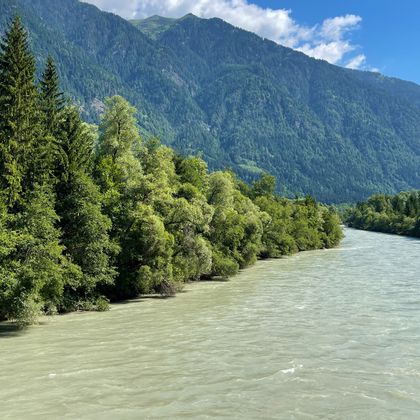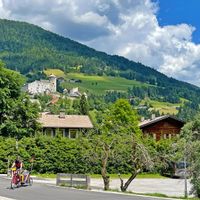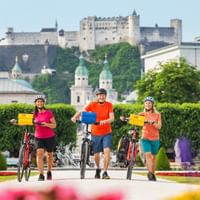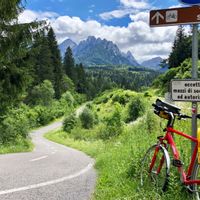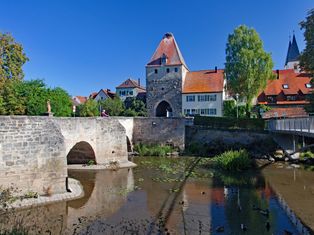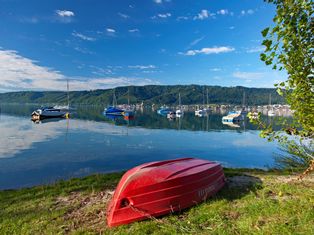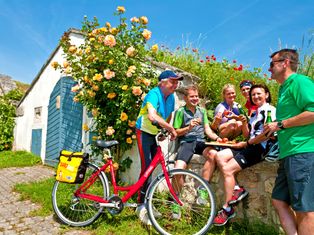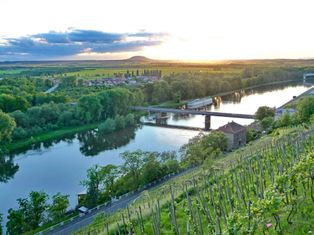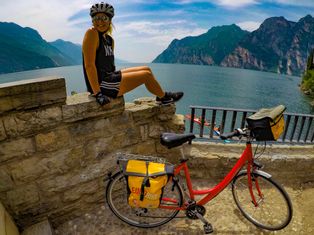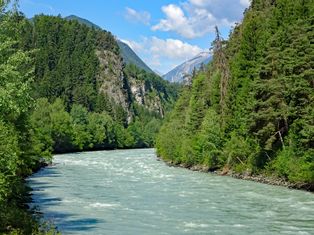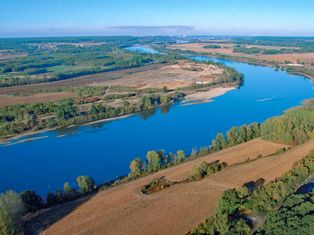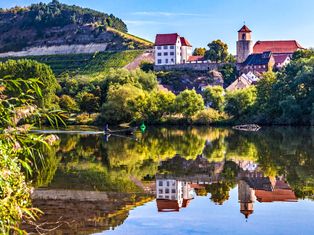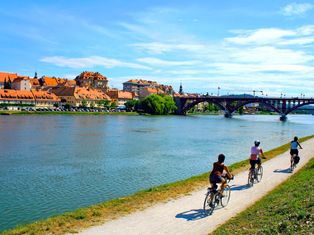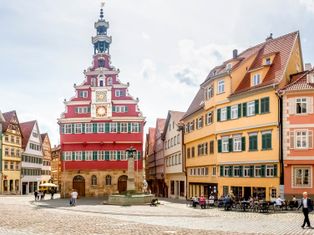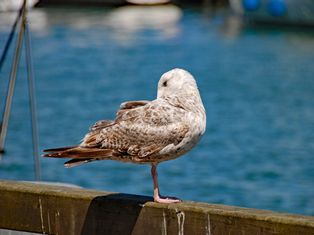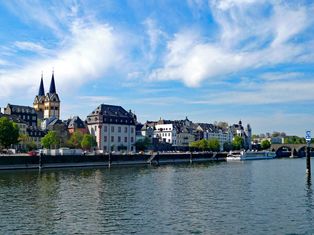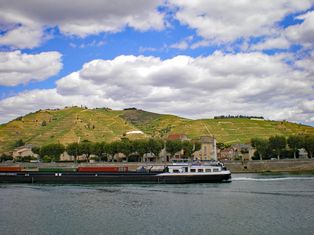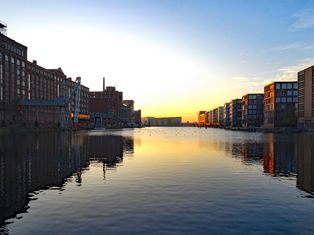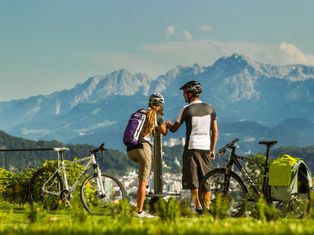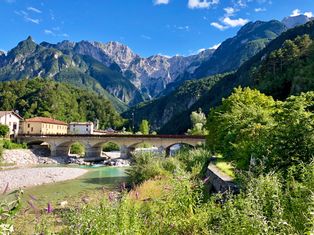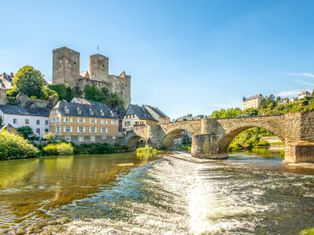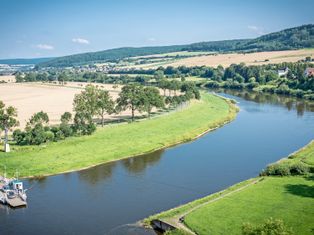Brief information about the Drau Cycle Path
The fourth longest tributary of the beautiful, blue Danube rises in South Tyrol, and more precisely in Toblach, from where it then quickly turns into Austria. The Drau represents the most important lifeline for East Tyrol and Carinthia. The cycle path along its banks offers a total of 510 kilometres of impressive views and unrestricted cycling pleasure. Along the way you will encounter numerous bathing lakes, cultural highlights, impressive natural spectacles and a southern holiday atmosphere. Find out more about our most beautiful individual cycle tours along the Drau.
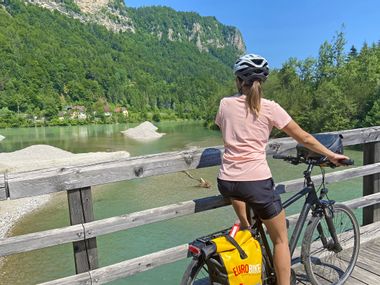
The most beautiful stages and tours on the Drau Cycle Path
Drau Cycle Path Classic
The sun-drenched south of Austria is probably one of the most beautiful backdrops that you can imagine for a cycle tour. The popular Drau Cycle Path meanders from Toblach in East Tyrol, on via Spittal to Villach and finally ends after a visit to the Rosental at the famous Klopeiner See.
Drau-Cycle Path for families
Interesting stage locations, picture-perfect landscapes, a good dose of vitamin D in the form of sun rays and exciting adventures await you and your children on the Drau-Cycle Path for Families. Not only the parents, but also the kids will feel completely at home there.
Alpe Adria Salzburg - Grado
From the city of Mozart to the sea - the Alpe Adria Cycle Path is not only known to passionate cyclists. From Salzburg to Grado you also cycle the part between Spittal and Villach on the Drava cycle path. Enjoy the Austrian as well as the Italian landscape, hospitality and culinary delights.
Alpe Adria - based in one hotel
The sunny small town of Villach is the main location for our popular Villach tour. From your comfortable feel-good hotel, you start daily in a different direction to get to know a new lake, new place and beautiful landscape! The perfect mix of activity and relaxation
Course of the Drau
Source of the Drau
The fourth largest tributary of the Danube has its source above the Toblacher Feld in the municipality of Toblach, in the South Tyrolean Puster Valley. From there, the water from its five main springs flows over steep slopes into the valley. Overall, the Drau already has a difference in altitude of a good 400 metres on its first ten kilometres. Only in the valley does the river really form.
River length
From Toblach to its mouth in the Black Sea, the Drau flows about 750 km through South Tyrol, Austria, Slovenia, Croatia and Hungary.
Cycle Path
However, not the entire length of the Drau is accessible by bike. The official Drau Cycle Path is almost exactly 510 km long, starts almost at the source in Toblach and ends in Varaždin. However, an extension of the cycle path is already being planned! The route runs, especially in Austria, on paved or easily passible, unpaved roads, mostly directly on the banks of the Drau.
Signage
There are no uniform signs along the entire Drau cycle path. In South Tyrol the signs are light blue, but in here it is called the Pustertal Cycle Path. The signs are green in Carinthia and blue in Slovenia! You will find more information in the relevant travel documents.
Questions and answers about the Drau Cycle Path
The most beautiful places along the Drau
Toblach
The enchanting municipality of Toblach is located in the South Tyrolean Puster Valley. Dobbiaco is famous and popular far and wide for its Dolomite peaks, such as the Three Peaks and of course for winter sports and tourism. The so-called ‘gateway to the Dolomites’ borders on several nature parks and has two lakes. In short: Toblach is a wonderful place to relax, do sports and enjoy year-round.
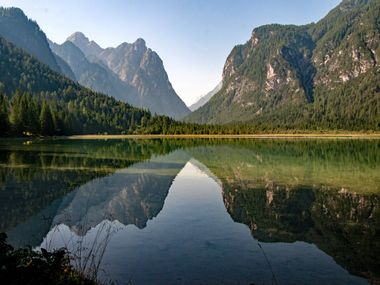
Lienz
‘The south begins with us’ – this is the slogan for the sunny city of Lienz. And if you look at the sunny hours of more than 2000 hours per year, you know they aren’t exaggerating. Spectacular views of the mountains, Mediterranean flair and perfect conditions for athletes in every season make Lienz one of the most popular holiday destinations in Austria. You can look forward to hospitality that truly comes from the heart and wonderful weather!
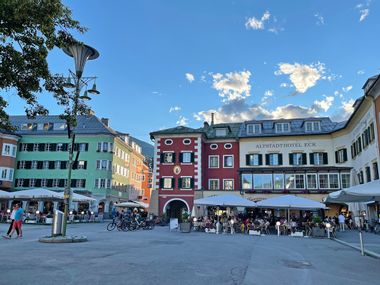
Spittal an der Drau
The cute little town of Spittal an der Drau is, as the name suggests, in the immediate vicinity of the Drau cycle path. Also not far from Spittal is the glittering Millstätter See. Stroll through the small streets in the evening, let yourself be pampered in the local restaurants and look forward to the next day of cycling!
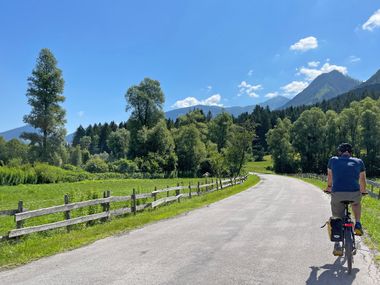
Villach
In the middle of some of the most beautiful lakes in Austria lies the charming town of Villach! With a population of over 60,000, Villach is one of the ten largest cities in Austria. Don’t miss out on a look at the main square, pay a visit to one of the numerous museums and, while walking through the city, imagine how thousands of people enjoy the famous Villach Carnival here every year!

Maribor
The charismatic city of Maribor is located in the middle of a hilly wine region in Slovenia. It is surrounded by vineyards, meadows and fields and makes the nature-loving guests among you happy. After a stroll through the city centre, you should definitely enjoy a glass of wine. You can also visit the historic castle and conquer Maribor’s local mountain! You will certainly not be bored here!
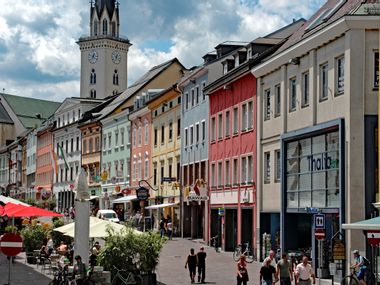
Useful information about a cycle tour on the Drau
Cuisine along the Drau Cycle Path
Of course, the cuisine along the Drau cannot be lumped together. The influences and traditions of the individual regions are different. On the one hand we have the influences of East and South Tyrol, regions that are known for very hearty and traditional cuisine. Schlipkrapfen, bread with delicious ‘speck’ and seductively sweet blackberry cakes will taste particularly good after a hard day. On the Carinthian side of the Drau Cycle Path, you can look forward to a culinary foray through a very down-to-earth and varied cuisine. You should definitely try the famous Carinthian Kasnudeln (cheese noodles) and a fresh Carinthian Reindling. Simply irresistible!

The climate along the Drau Cycle Path
One reason why the Drau Cycle Path is so popular with our guests is the incomparably beautiful weather. East Tyrol and Carinthia are among the sunniest regions in Austria and mostly keep their promise of an average of 2000 hours of sunshine per year. From April to October you can expect wonderfully pleasant temperatures and little rainfall. In the hot summer, the numerous bathing lakes provide a chance to cool off. What more could a cyclist’s hear desire?
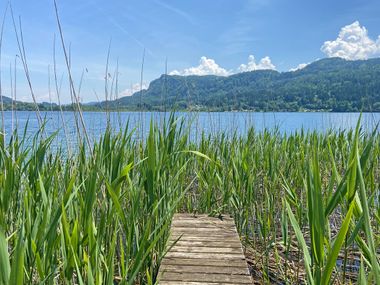
Did you know…
- …that Lower Styria, an area that the Drau flows through, does not belong to Austria, but to Slovenia?
- …that Austria’s highest mountain, the Grossglockner, is located here?
- …that the name ‘Carinthia’ comes from Celtic and means either friend or rock. From which word the name was derived can no longer be traced today.
- …that a Carinthian girl can only marry when she can ‘krendeln’? This is a technique with which Carinthian cheese noodles are closed with the fingernail.

“If you have any questions about our cycle tours along the Drau, I am your man! I look forward to every single request!”
